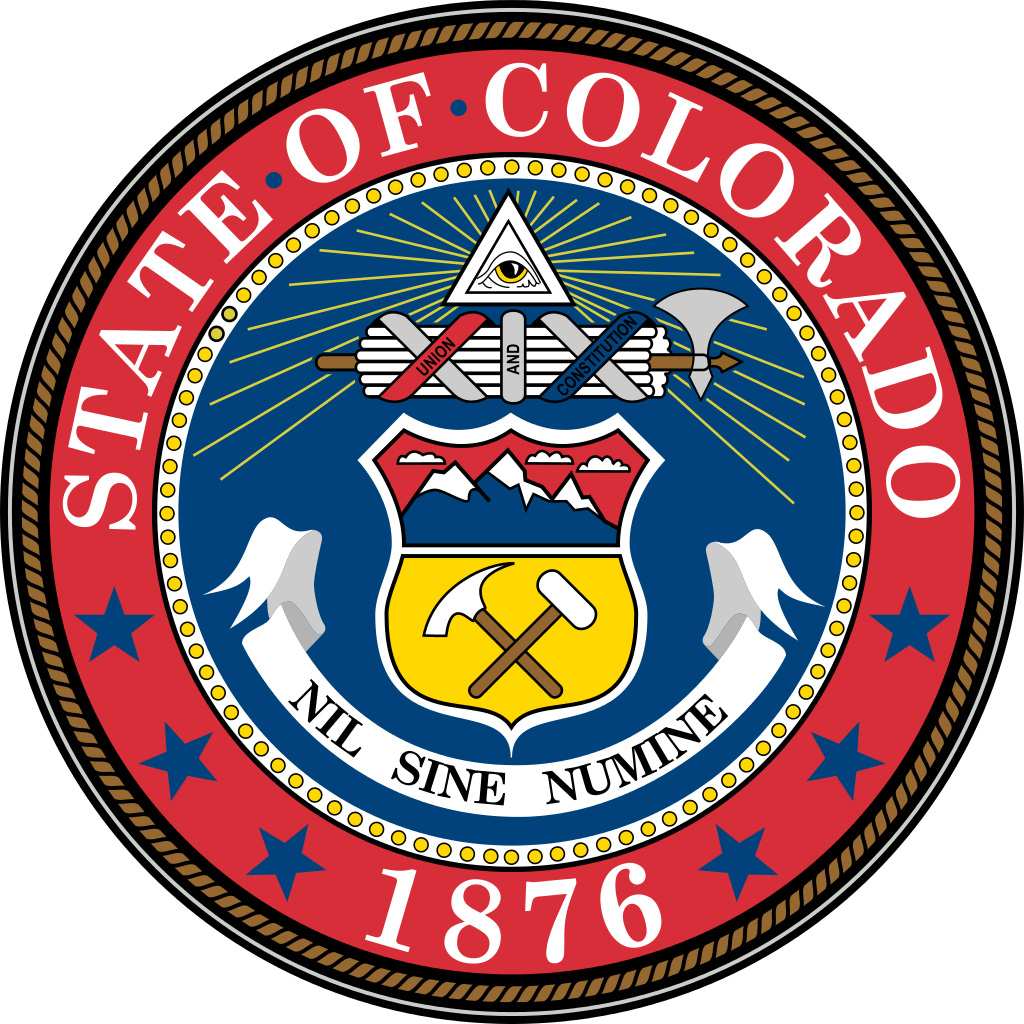Great Seal of Colorado official state seal. Photo by Svgalbertian / Wikipedia (public domain image).
Official State Seal of Colorado
The first General Assembly of the State of Colorado approved the state seal in 1877. All State Seals
Only the Colorado Secretary of State is authorized to affix the Great Seal of Colorado to any document. The person primarily given credit for the design is Lewis Ledyard Weld, the Territorial Secretary appointed by President Lincoln in 1861 (possibly collaborating with Territorial Governor William Gilpin - both had knowledge of heraldry and symbolism).
Symbols on the State Seal of Colorado
At the top of the seal is "the eye of God" in a triangle with golden rays radiating from the sides. This symbol, of Masonic origin, is also found on the Great Seal of the United States (reverse); it can be found on the back of a one-dollar bill.
Below the eye of God is a Roman fasces symbolizing a republican form of government; a fasces is a set of rods bound in a bundle which contains an axe (in ancient Rome, the bodyguards of a magistrate carried fasces as symbols of the magistrate's imperium). On the Colorado state seal, the statute specifies that the rods bound together symbolize strength lacking in a single rod, and the axe represents authority and leadership. The left diagonal of the ribbon binding the fasces bears the word "UNION: the right diagonal bears the word "CONSTITUTION".
The top section of the heraldic shield bears three of Colorado's snow-capped mountains with clouds above against a red background. The lower half of the shield has a pick and sledge hammer (miner's tools) crossed on a golden background.
Below the shield is a banner with the Latin motto, "Nil Sine Numine" (Nothing without the Deity; Colorado's official motto), and finally at the bottom "1876" (the year Colorado came into statehood).

